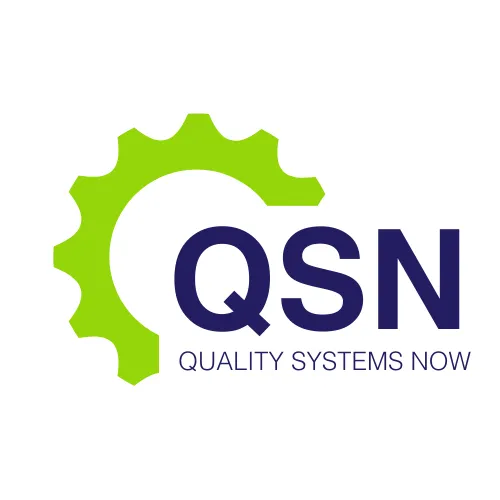LATEST NEWS

A Strategic Approach for Timely Market Entry
Achieving regulatory approval is a critical milestone in the lifecycle of any product intended for highly regulated markets, such as pharmaceuticals, medical devices, or biotechnology. Regulatory submissions are complex processes requiring detailed documentation and compliance with strict guidelines. Companies must demonstrate that their products meet safety, efficacy, and quality standards, as well as ensure that their operational frameworks adhere to applicable regulatory requirements, such as Good Manufacturing Practices (GMP) or ISO 13485.
Delays in securing regulatory approval can have significant consequences, including postponed market entry and lost revenue opportunities. These setbacks are often rooted in inadequate preparation during the development phase. By addressing the importance of real-time documentation, strategic Quality Management System (QMS) implementation, and the alignment of product development with regulatory compliance, companies can streamline their path to market.
The Role of Development Records in Regulatory Submissions
Regulatory submissions hinge on comprehensive and accurate documentation that provides a complete narrative of the product's development journey. This documentation encompasses development records, clinical study data, and QMS-related documentation.
Development Records
Development records provide a detailed account of the design, testing, and optimization processes that a product undergoes during its early stages. These records capture critical design decisions, risk assessments, and changes made to address potential issues. Without real-time documentation, key information can be lost, resulting in incomplete or inconsistent records. Regulatory authorities require this level of detail to assess the product's safety and performance.
Clinical Studies
For products requiring clinical evaluation, such as pharmaceuticals and certain medical devices, clinical study data is a cornerstone of regulatory submissions. Clinical trials must be meticulously planned, executed, and documented to meet regulatory standards. This includes capturing trial protocols, patient data, statistical analyses, and adverse event reporting. Delays in collating or verifying this data can significantly impact submission timelines.
QMS Documentation
QMS documentation ensures that product development and manufacturing processes are aligned with regulatory requirements. This includes standard operating procedures (SOPs), process validation protocols, and records of internal audits. The absence of a robust QMS framework during product development can lead to documentation gaps, inconsistencies, and a lack of traceability, all of which may hinder regulatory approval.
Real-Time Documentation: A Cornerstone of Compliance
Capturing documentation in real time is essential for maintaining the accuracy, consistency, and completeness of development records. Retrospective data compilation is not only time-consuming but also prone to errors and omissions. Real-time documentation ensures that all decisions, processes, and outcomes are recorded as they occur, providing an accurate historical account of the product's development.
Moreover, real-time documentation facilitates faster responses to regulatory inquiries. Regulatory bodies often request additional information or clarification during the submission review process. Having well-organized, up-to-date records readily available can significantly reduce the time required to address such requests, accelerating the overall approval timeline.
The Intersection of Product Development and QMS
Regulatory authorities not only evaluate the product itself but also assess the company's operational and quality frameworks. For this reason, investing in a QMS early in the development process is crucial.
The Value of Early QMS Integration
Integrating a QMS during the early stages of product development ensures that compliance is built into the product lifecycle from the outset. This approach provides several benefits:
Standardization: Establishing standardized procedures for development activities ensures consistency and traceability.
Risk Management: A QMS facilitates systematic risk assessments, enabling proactive identification and mitigation of potential issues.
Regulatory Alignment: Early adoption of a QMS ensures alignment with regulatory expectations, reducing the risk of compliance gaps.
While full compliance may not be required during early-stage development, having a scalable QMS framework allows companies to incrementally adopt higher compliance levels as the product progresses toward commercialization.
Licensing Requirements: GMP and ISO 13485
Product registration with regulatory authorities is contingent not only on the submission itself but also on the company's ability to demonstrate compliance with relevant licensing requirements. Two key accreditations include:
Good Manufacturing Practices (GMP): GMP licensing ensures that manufacturing processes are consistent, controlled, and meet quality standards. It covers areas such as personnel training, equipment maintenance, and documentation practices.
ISO 13485: This international standard specifies requirements for a QMS tailored to the design and manufacture of medical devices. ISO 13485 certification demonstrates a company's commitment to producing safe and effective devices.
Companies must align their QMS frameworks with these standards to obtain the necessary licenses. Failure to do so can result in regulatory submission rejections, delaying market entry.
Consequences of Delayed Submissions
Delays in regulatory submissions can have far-reaching consequences for a company's operations and market position. These include:
Postponed Market Entry: Delays in obtaining regulatory approval can postpone product launch, allowing competitors to capture market share.
Increased Costs: Extended timelines result in higher costs related to ongoing development, compliance remediation, and opportunity losses.
Erosion of Stakeholder Confidence: Investors and partners may lose confidence in the company's ability to deliver on its promises, potentially impacting funding and collaboration opportunities.
Best Practices for Streamlined Regulatory Submissions
To avoid delays and maximize the likelihood of timely regulatory approval, companies should adopt the following best practices:
Establish a Robust QMS Early: Implement a scalable QMS framework during the early stages of development, allowing for incremental compliance adoption as the product progresses.
Prioritize Real-Time Documentation: Ensure that all development activities, clinical studies, and quality processes are documented in real time to maintain accuracy and traceability.
Conduct Internal Audits: Regularly review documentation and processes to identify and address compliance gaps before submission.
Engage Regulatory Experts: Collaborate with regulatory professionals to navigate submission requirements and address potential challenges proactively.
Plan for Licensing Requirements: Align QMS practices with GMP or ISO 13485 standards to secure the necessary licenses for product registration.
Talk To Us to Find out More >>
Securing regulatory approvals is a multifaceted process that requires meticulous preparation, strategic planning, and a commitment to compliance. By prioritizing real-time documentation, investing in a robust QMS, and aligning product development with regulatory requirements, companies can minimize delays and ensure a smoother path to market.
The integration of compliance frameworks into the product lifecycle not only facilitates regulatory approval but also establishes a strong foundation for operational excellence. In highly regulated industries, this approach is essential for achieving long-term success and maintaining competitiveness in the marketplace.
